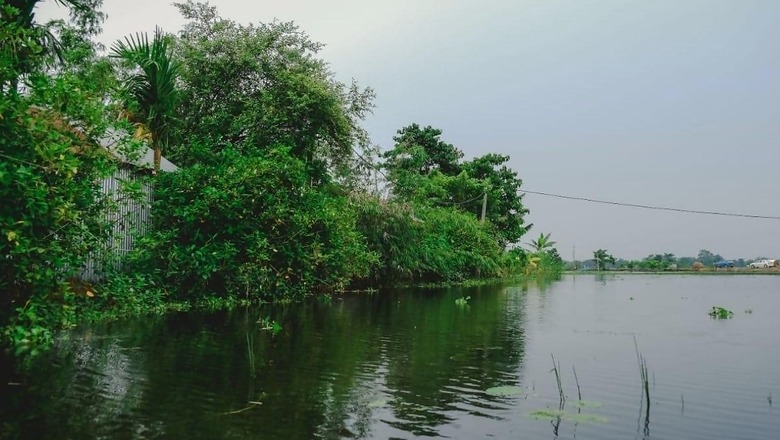
views
As Assam continues to get ravaged amid ongoing floods, a dredger from the United States will remove silt from the Brahmaputra river next year, to help mitigate floods and erosion. To be provided by Ellicott Dredges, the device's installation and operation will be supervised by the firm's representatives in India.
The Assam government had previously floated a tender for the purpose, which the company won. “Removal of silt in the Brahmaputra is expected to make a change in the situation. The dredger from the US is expected to arrive next year,” said Keshav Mahanta, the state's Minister for Water Resources.
However, the state government's decision on dredging comes at the heels of a report by the Central Water Commission, which is not in favour of the exercise.
Earlier, an eight-member committee headed by a former professor of Gauhati University, Dulal Goswani, had also disagreed with the exercise. The Committee, called - ‘Fluvial Morphology of River Brahmaputra, Sediment Management with Possibility of Dredging by Adopting Modern Technology’ - was of the opinion that dredging operations were an unfeasible option to mitigate the twin hazards of flood and erosion in Assam.
The report had underscored the failure of the previous exercises in the state by the Inland Waterways Authority of India (IWAI) and the Water Resources Department. Dredging of the Brahmaputra river was taken up in 1977 and 1978 at Dharapur near Guwahati. However, the dredged channels were again filled with silt in the subsequent flood waves which compelled the government to discard the operation.
The committee recommended the removal of silt from the river bed at selected locations, which the government had accepted. Currently, similar operations are also undertaken regularly on a smaller scale in the river by the Inland Waterways Authority of India (IWAI) to prevent blockage of navigation.
Due to the heavy deposition of silt, the river has frequently changed its course. Excessive silt deposition has given rise to braiding and meandering patterns in the alignment of the river system.
Corrective dredging is aimed at digging out sediments from the river bed which will increase the water retention capacity of the river. Consequently, the pressure on the banks is expected to be reduced, thus minimising the chances of flood and erosion.
The government had also firmed up plans to construct an 890 kilometres-long Express Highway along the entire length of the Brahmaputra - from Sadiya in the east to Dhubri in the west - with the silt dug out from the river. The goal was to check erosion but it is not known whether the government plans to go ahead with the project.
An official said a decision had not yet been reached on the particular stretch of the river which is to undergo ‘corrective dredging’. “An evaluation would be done after the floodwaters recede and then a decision would be made by the department. Given that the Brahmaputra is a very unpredictable river, it is likely that the spots would keep changing frequently,” he said.
The exercise assumes importance in the backdrop of the plans to link Brahmaputra with Chittagong port in Bangladesh and Haldia in West Bengal. Tripura has already received the first batch of transit cargo of 100 tones at the Akhaura Integrated Check Post (ICP) from Bangladesh sent from the Haldia port of West Bengal.
Three years ago, union transport minister Nitin Gadkari had also announced Rs 250 crores to for dredging the river, to expedite the project to connect to Bangladesh.
As part of the plan to come up with effective management strategies for the Brahmaputra river, the government had resolved to form an expert committee, to be sent to China. A study was to be conducted in association with the World Bank to frame policies for checking flood and erosion. But the plan has been shelved for the time being with the worsening of ties between India and China and the ongoing Covid-19 pandemic.
(Rajeev Bhattacharyya is a senior journalist in Guwahati. Views expressed are personal)




















Comments
0 comment